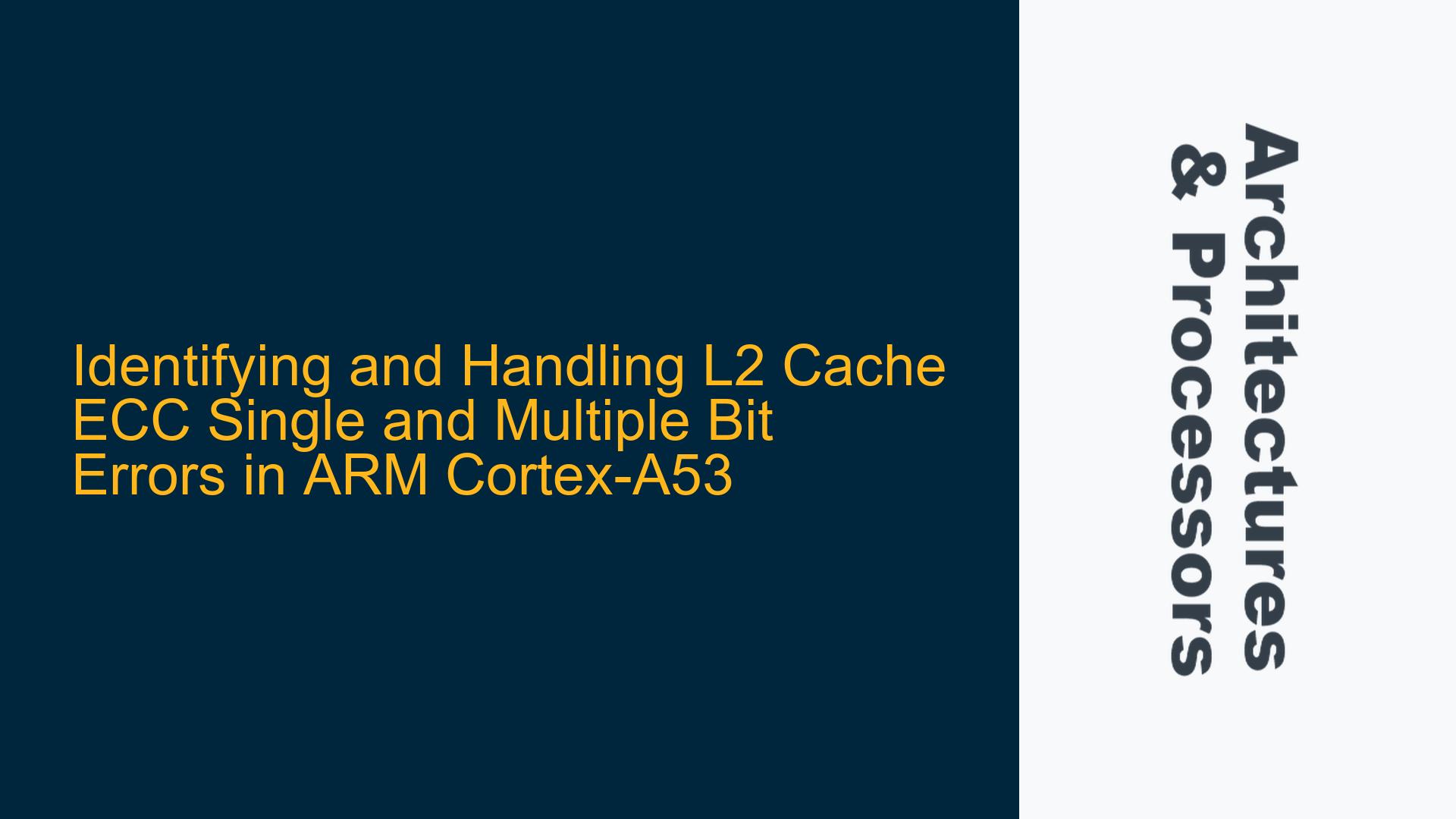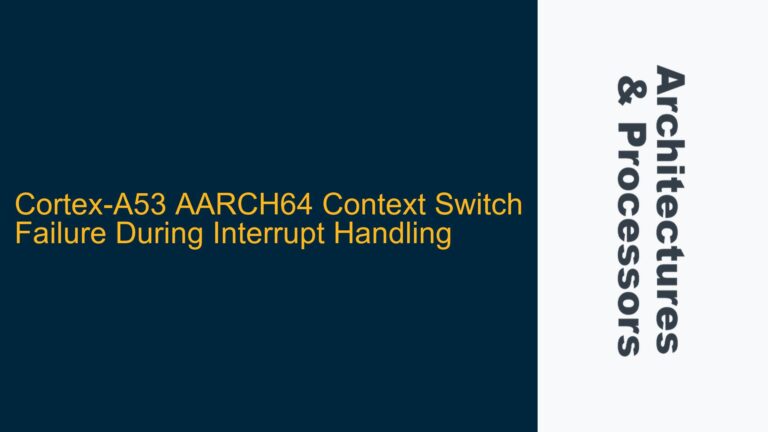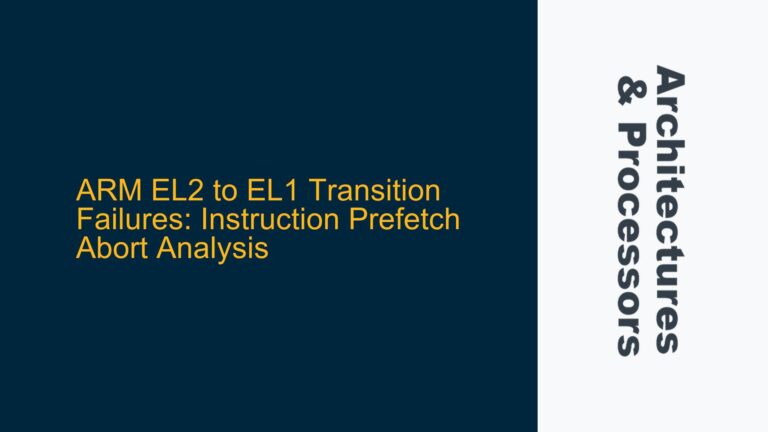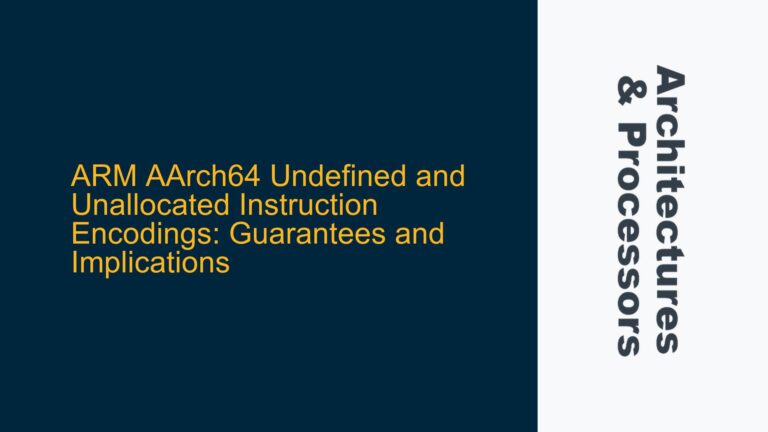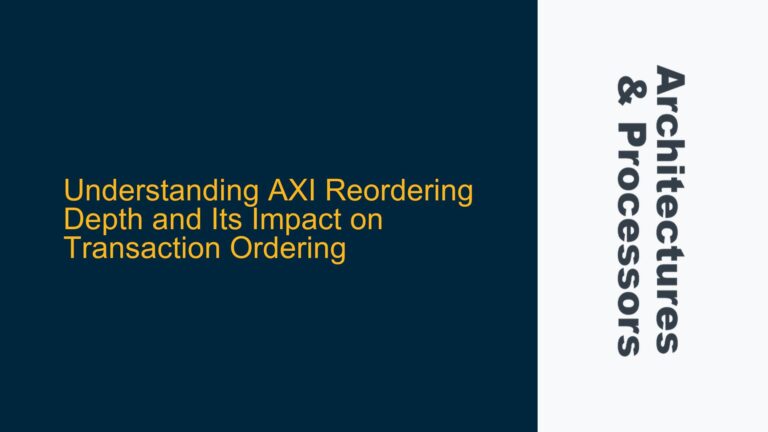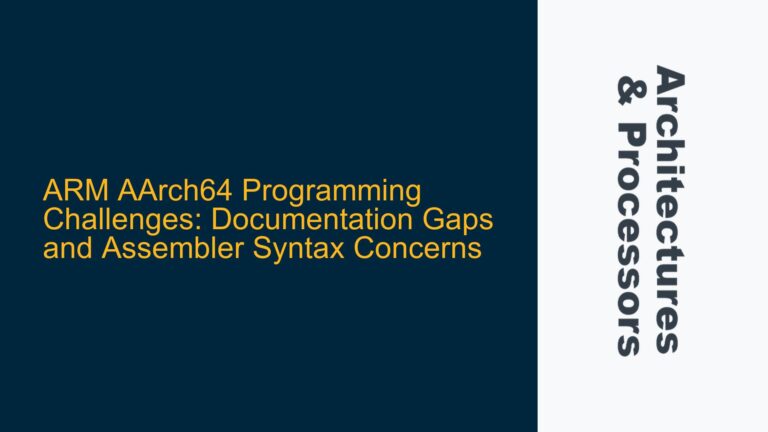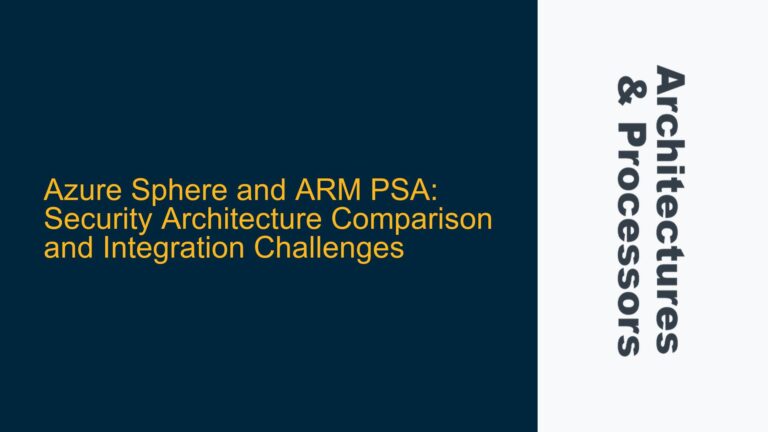L2 Cache ECC Error Detection Mechanism in Cortex-A53
The ARM Cortex-A53 processor, a widely used core in embedded systems, implements Error Correction Code (ECC) mechanisms to ensure data integrity in its L2 cache. ECC is critical for detecting and correcting memory errors, which can occur due to various factors such as radiation, electrical noise, or aging hardware. The Cortex-A53 L2 cache employs a Single Error Correction, Double Error Detection (SECDED) scheme, which allows it to correct single-bit errors and detect double-bit errors. However, the distinction between single-bit and multiple-bit errors is not always straightforward, as the hardware and software interfaces for reporting these errors can be nuanced.
The L2 Memory Error Reporting Status Register (L2MERRSR_EL1) is the primary register for reporting L2 cache ECC errors. Bit 31 of L2MERRSR_EL1 is specifically designated for indicating multiple-bit errors. When this bit is set, it signifies that a double-bit or uncorrectable error has occurred in the L2 cache. However, the register does not explicitly provide a separate bit for single-bit errors. This absence raises questions about how single-bit errors are handled and reported, especially since they are correctable by the SECDED mechanism.
The SECDED scheme inherently corrects single-bit errors without requiring explicit software intervention. This correction happens transparently during cache read operations, meaning that single-bit errors may not always be logged or reported in the same way as multiple-bit errors. This behavior is by design, as single-bit errors are non-critical and do not compromise system integrity. However, for debugging and system health monitoring purposes, it is often desirable to track both single-bit and multiple-bit errors separately.
Memory Error Reporting Limitations and SECDED Behavior
The Cortex-A53 L2 cache’s SECDED mechanism introduces specific limitations in how errors are reported. Since single-bit errors are corrected on-the-fly, they may not trigger an error interrupt or update the L2MERRSR_EL1 register. This behavior is consistent with the principle of minimizing software overhead for non-critical errors. However, it also means that single-bit errors can go unnoticed unless additional monitoring mechanisms are implemented.
The L2MERRSR_EL1 register is primarily designed to report uncorrectable errors, such as double-bit errors, which cannot be resolved by the ECC logic. These errors are critical and require immediate attention, as they can lead to data corruption or system crashes. The register’s focus on uncorrectable errors explains why it lacks a dedicated bit for single-bit errors. Instead, single-bit errors are handled silently by the hardware, ensuring system stability without interrupting normal operation.
Another factor to consider is the error injection capability of the Cortex-A53 L2 cache. The L2 Auxiliary Control Register (L2ACTLR) includes a bit (L2DEIEN) that enables double-bit error injection for testing purposes. When this bit is set, the hardware injects double-bit errors into the L2 cache data RAMs during write operations. This feature is useful for validating the error detection and correction mechanisms but does not provide a direct way to test single-bit error handling. The absence of single-bit error injection further complicates the task of verifying how single-bit errors are managed in the system.
Enabling Single-Bit Error Tracking and Debugging Strategies
To address the challenge of tracking single-bit errors in the Cortex-A53 L2 cache, developers can implement additional software-based monitoring mechanisms. One approach is to use performance counters or custom logging routines to detect and record cache access patterns that may indicate the occurrence of single-bit errors. For example, an unusually high number of cache read retries or corrections could suggest the presence of single-bit errors, even if they are not explicitly reported by the hardware.
Another strategy is to leverage external tools or diagnostic software that can interface with the Cortex-A53’s debug and trace features. These tools can provide insights into cache behavior and help identify anomalies that may be indicative of single-bit errors. However, this approach requires specialized hardware and software, which may not be available in all development environments.
For systems where tracking single-bit errors is critical, developers can consider modifying the firmware to include periodic cache scrubbing routines. Cache scrubbing involves reading and rewriting cache lines to force the ECC logic to correct any single-bit errors that may have occurred. By monitoring the results of these scrubbing operations, developers can infer the presence of single-bit errors and take appropriate action, such as logging the event or triggering a system health alert.
In cases where the hardware does not provide explicit support for single-bit error reporting, developers may need to rely on indirect methods to infer the occurrence of such errors. For example, analyzing system logs for unusual patterns or correlating cache performance metrics with error rates can provide valuable insights. While these methods are not as precise as direct hardware reporting, they can still be effective in identifying and addressing potential issues.
In summary, the Cortex-A53 L2 cache’s ECC mechanism is designed to prioritize system stability and minimize software overhead, which can make it challenging to track single-bit errors directly. By understanding the limitations of the hardware and implementing complementary software-based monitoring strategies, developers can effectively manage both single-bit and multiple-bit errors in their systems. This approach ensures robust error handling and maintains the integrity of the embedded system over its operational lifetime.
